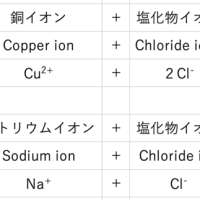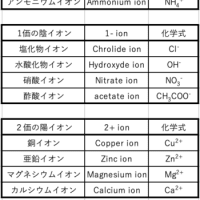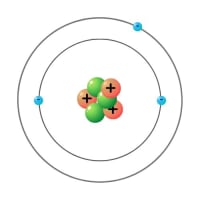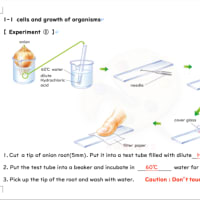物理で最も大切なのは見えない力を「可視化」することである。
今回ならば、力の矢印を正確に作図することが理解への鍵となる。
The most important thing is "Visualization" when you study physics.
Now, the key to understand this unit is drawing the "arrow of the force" correctly.
word list
| 力 | force |
| 水圧 | water pressure |
| 重さ | weight |
| 密度 | density |
| 浮力 | buoyancy |
| ばねばかり | spring scale |
| 力の合成 | composition of forces |
| 合力 | resultant force |
| 力の分解 | decomposition of force |
| 分力 | component of force |
| 斜面 | slope |
| 平行 | parallel |
| 垂直 | perpendicular |
| 運動 | motion |
| 速さ | speed |
| 平均の速さ | average speed |
| 瞬間の速さ | instantaneous speed |
| 速度 | velocity |
| 時間 | time |
| 大きさ | amount |
| 向き | direction |
| 等加速度運動 | uniformaly accelrated motion |
| 落下運動 | motion of a falling |
| 摩擦力 | frictional force |
| 等速直線運動 | uniform motion |
| 慣性の法則 | the law of inertia / Newton's first Law |
| 慣性 | inertia |
| 作用 | action |
| 反作用 | reaction |
| 作用・反作用の法則 | the law of action and reaction / Newton's third Law |
| 運動の法則 | Newton's second Law |
| 仕事 | work |
| 滑車 | pulley |
| 重力 | gravity |
| 仕事の原理 | principle of work |
| 仕事率 | power |
| 位置エネルギー | potential energy |
| 運動エネルギー | kinetic energy |
| 質量 | mass |
| 高さ | hight |
| 力学的エネルギー | mechanical energy |
| 力学的エネルギー保存の法則 | conservation of mechanical energy |
| 電気エネルギー | electric energy |
| 光エネルギー | light energy |
| 熱エネルギー | thermal energy |
| 化学エネルギー | chemical energy |
| 弾性エネルギー | elastic energy |
| エネルギー保存の法則 | conservation of energy |
| 熱伝導 | thermal conduction |
| 対流 | convection |
| 熱放射 | thermal radiation |
| 化石燃料 | fossil fuels |
物理にしてはかなり専門用語が多い…。 So many terms...
この単元は5つのパートに分かれている。This unit has 5 parts
①水圧・浮力 water pressure and upthrust
②合力・分力 composition and decomposition of forces
③力と運動 force and motion
④仕事と力学的エネルギー work and mechanical energy
⑤いろいろなエネルギーの移り変わり energy transfer
①水圧・浮力 water pressure and upthrust
水中にある物体は、まわりにある水から力を受ける。
水による圧力を水圧という。
圧力については1年生の時に学んでいるが、水圧の場合は水に接しているところ全体に圧力を受けるのが特徴だ。
水圧はp=ρhg(水圧=水の密度×水深×重力加速度)で求められる。
ρとgはほぼ不変なので、水圧は水深によって変化すると考えてよい。
An object in the water is pushed by the water.
The pressure by the water is called "water pressure".
You already studied about pressure, but you can calculate water pressure by another way.
Water pressure : p=ρhg ( pressure = density of water × depth × gravitational acceleration ).
ρ and g cannot be changed, so water pressure can be changed by depth.
物体はある程度の大きさを持っているので、物体の上面と下面では水圧の大きさに差が出る。
これが浮力の原因になる。
浮力の大きさFはF=ρVg(浮力=水の密度×水に沈んだ体積×重力加速度)で求められる。
ここでもρやgは不変なので、体積のみによって浮力の大きさが決まる。
私が浮力を教えるときによくいうのが、水泳で水面から体を出すと逆に沈むというのがある。
浮力の考え方から言うと、沈んだ体積が大きい方が浮力が大きくはたらくので体を水につけたほうがよく浮くのである。
Since an object has a certain size, there will be a difference in the magnitude of water pressure between the top and bottom surfaces of the object.
This is the cause of buoyancy.
Buoyancy : F=ρVg ( Buoyancy force = density of water × volume × gravitational acceleration )
ρ and g cannot be changed, so buoyancy can be changed by volume.
②合力・分力 composition and decomposition of force(s)
2つの力を合わせたものを合力といい、1つの力の2つに分解したものを分力という。
合力は同じ方向のものであれば単純に足せばよく、反対方向であれば一方からもう一方を引けばよい。
また、一直線上に2つの力がないときは、その2つの力を2辺とする平行四辺形の対角線によって合力を求めることができる。
分力はその逆をすると求めることができる。
③力と運動 force and motion
運動には大きさと向きがある。
運動の大きさのことを速さといい、それに向きを追加した量を速度という。
速さはv=d/t(速さ=移動距離÷時間)で求めることができる。
ある一定時間の間に移動した距離を求めた「平均の速さ」は、一定の速さで移動したとみなした速さだ。
これに対して刻々と変わる速さに注目したのが瞬間の速さだ。
瞬間の速さも同じ式で求めることができるが、時間が僅かなため計算することが難しく、詳しくは微分が必要だ。
日本の教育では、記録タイマーという装置を使って運動のようすを調べる。
記録タイマーは規則的に打点する機械で、紙テープをはさんで引っ張ると引っ張った運動が記録される。
Motion has size and direction.
The size of motion is speed, and the speed added direction is velocity.
Speed or velocity : v=d/t ( velocity = distance ÷ time taken )
The "average speed," which is the distance traveled over a given period of time, is the speed at which the traveler is considered to have traveled at a constant speed.
In contrast, the instantaneous velocity focuses on the ever-changing speed.
Instantaneous velocity can also be obtained using the same formula, but it is difficult to calculate because of the small amount of time involved and requires differentiation for details.
In Japan, we do experiment with "Kiroku-timer"(recording timer) to study motion.
Kiroku-timer is the machine which strike regularly, and record the motion onto tape of paper.
斜面を下る運動する物体のようすを記録すると、等加速度運動をすることがわかる。
これは、重力の分力によって斜面にそった方向への加速が続くからだ。
斜面の角度を大きくしていくと、加速度も大きくなっていく。
これは、重力の分力のうち、斜面方向にそった方向への力が大きくなるからだ。
斜面の角度を90°にすると、落下運動になる。
このときの加速度は9.8m/s^2であることが知られており、重力加速度と呼ばれている。
摩擦力がはたらいたり、斜面を登ったりするような運動をするときは、加速度はマイナスになる。
加速度がマイナスになるということは、どんどん遅くなっていくということだ。
もしくは途中で逆走することになる。
加速度がマイナスなのは、運動の方向と力の方向が逆だからだ。
When we record the motion of an object running down a slope, it runs as uniformed accelated motion (constant acceleration).
This is because the acceleration continues in the direction along the slope due to the partial force of gravity.
As the angle of the slope increases, the acceleration also increases.
This is because the force along the slope direction becomes larger among the partial forces of gravity.
When the angle of the slope is 90°, the motion becomes a falling motion.
This acceleration is 9.8m/s^2 and called gravitational acceleration.
When frictional forces are at work, or when a motion is made such as climbing a slope, acceleration becomes negative.
Negative acceleration means that you are going slower and slower or you will be running backwards in the middle of the road.
Acceleration is negative because the direction of motion and the direction of force are opposite.
ニュートンの法則には3つの法則がある。
1つ目は慣性の法則。
物体に力がはたらかないか、合力がゼロのときには等速直線運動をする。
2つ目は運動の法則。
これは運動方程式として知られていて、F=ma(力=質量×加速度)で求められる。
3つ目は作用反作用の法則。
2つの物体の間で、一方が力を加えたときは、もう一方の物体から、向きは逆で一直線上にある大きさの等しい力を受ける。
Newton's law
The first law is "The law of inertia".
If no force works or resultant force is zero, the object runs as uniformed motion.
The second law is "The law of motion".
This is known as motion formula : F=ma ( force = mass × acceleration ).
The third law is "The law of action and reaction".
Between two objects, when one exerts a force, it is subjected to a force of equal magnitude from the other object, opposite in direction but in a straight line.
④仕事とエネルギー Work and mechanical energy
仕事はW=Fd(仕事=力×距離)で求めることができる。
仕事は電力や熱量と同じジュールという単位で表すエネルギーを使った結果である。
仕事は道具を使ったとき、力や距離の大きさが変わっても、全体の量は変わらない。
これを仕事の原理という。
道具には斜面やてこ、滑車などがある。
道具を使うと、仕事をする時間を短くできることがある。
1秒間にする仕事を仕事率といい、P=W/t(仕事率=仕事÷時間)で求めることができる。
Work : W=Fd ( work = force × distance )
Work is result of using energy same as electric work or thermal work.
The principle of work : When you use simple machine, you can change the magnitude of force or distance but you cannot change total amount of the work.
Simple machine : slope, lever, pulley, etc...
You can do the work quickly when you use simple machine.
Power : P=W/t ( power = work done ÷ time taken )
仕事をする能力のことをエネルギーという。
Enegy is what makes things happen.
高い位置にある物体がもつエネルギーを位置エネルギーという。
位置エネルギーはU=mgh(位置エネルギー=質量×重力加速度×高さ)で計算できる。
中学では、質量に比例することと、高さに比例することを覚えておこう。
The enegy which an object has due to its high position is called gravitational potential enegy.
Gravitational potential energy : U=mgh ( U = mass × gravitational acceleration × height )
You should remember gravitational potential energy is proportional to mass or height.
運動している物体がもつエネルギーのことを運動エネルギーという。
運動エネルギーはK=1/2*mv^2(2分の1×質量×速さの2乗)で求められる。
中学では、質量に比例することと、速さの2乗に比例することを覚えておこう。
Kinetic enegy is the enegy of motion.
Kinetic energy : K=1/2mv^2 ( kinetic energy = 1/2 × mass × velocity × velocity )
Notice that velocity is squared while mass is not.
位置エネルギーと運動エネルギーは力学的エネルギーと呼ばれ、その総和は一定であることが知られている。
これを力学的エネルギー保存の法則という。
Mechanical energy is the object's combined potential energy and kinetic energy.
Law of conservation of mechanical energy : Mechanical energy = Potential energy + Kinetic energy
⑤いろいろなエネルギーの移り変わり energy transfer
電気エネルギー:電気がもつエネルギー
Electric energy
光エネルギー:光が持つエネルギー
可視光以外にも赤外線なども光だ。
Light energy
熱エネルギー:高温の物体がもつエネルギー
熱は高温の物体から低温の物体に直接触れたところから熱が移動する熱伝導や、対流、熱エネルギーが光エネルギーに変換されて放出される熱放射によって移動する。
Thermal energy
化学エネルギー:物質に蓄えられていて、化学変化によって取り出すことができるエネルギー
Chemical energy
音のエネルギー:音がもつエネルギー
Sound energy
弾性エネルギー:ゴムやばねのような変形した物体がもつ位置エネルギー
Elastic potential energy
いろいろな種類のエネルギーがあるが、すべてのエネルギーの総和は一定に保たれている。
これをエネルギー保存の法則という。
Law of conservation of energy : There are many different types of energy, but the sum of all energy is kept constant.

















